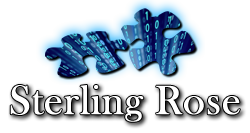Our love-hate relationship with Microsoft – and Apple and Google – is coming to a head. Our beef right now focuses on Microsoft and its hard push to get users to adopt the New Outlook. It’s the default for Microsoft 365 subscriptions, and it’s not as feature-rich as the Old Outlook, which Microsoft calls Classic Outlook. Subscription prices are another issue.
Let’s get one issue out of the way. We like subscriptions for application software, such Microsoft 365. They provide regular updates and bug fixes automatically, either periodically or as needed, to make sure you have the latest performance and security features. As we use the cloud more, these updates become a bigger benefit.
Our beef with Microsoft is with the New Outlook. In our opinion, Microsoft is pushing us into a new system that has fewer features than the one it replaced. We recently covered the differences between Old and New Outlook, and we invite you to revisit that article. Microsoft essentially forced us to go with New Outlook before it was ready for prime time. It may be faster, but Microsoft took away many features in the new version. It seems like they made the move for their own convenience, not for the betterment of its customers. They say they will restore some features, but we have to ask why they didn’t get in all the features before they rolled out the new version?
You can go back to the Old Outlook by clicking on the Help tab along the top of your screen and then clicking on Go to Classic. But it’s not a simple toggle-back-and-forth process. It takes some time, which you may not have when trying to get a lot of things done.
You really don’t have a lot of choices. Most organizations are locked into Microsoft 365 for email (Outlook), its suite of Office products (Word, Excel, PowerPoint, etc.), and the collaboration enabled by OneDrive and Teams. Everyone knows how to use the apps, and businesses, non-profits and governments know how to support them, either through internal tech departments, IT consultants or both.
Microsoft knows they have a firm grip. If they maintain the best possible security measures for their customers, they can get away with fewer features to support while raising prices. They’ll add features (and support them) when enough customers kick and scream or when another software provider threatens a piece of their market.
We can help you on the economic side by analyzing all your Microsoft and other application subscriptions to see where we can eliminate duplications of licenses or scale back some to meet your needs more efficiently. There’s no need to be oversubscribed. Call us – 973-433-6676 – or email us to set up an appointment.
